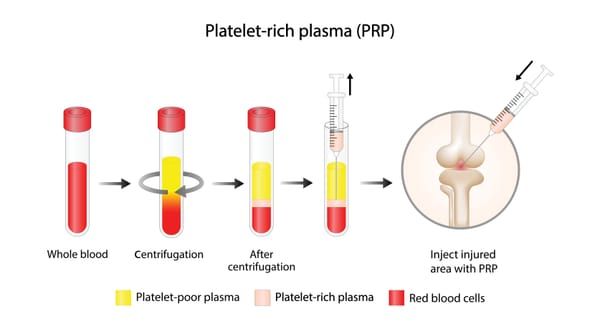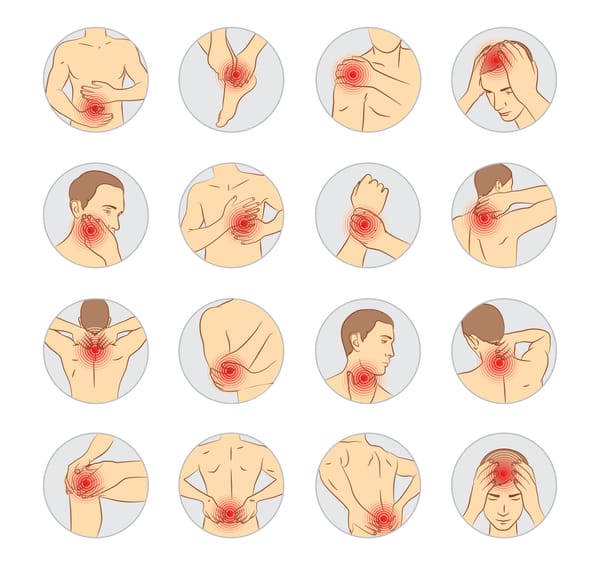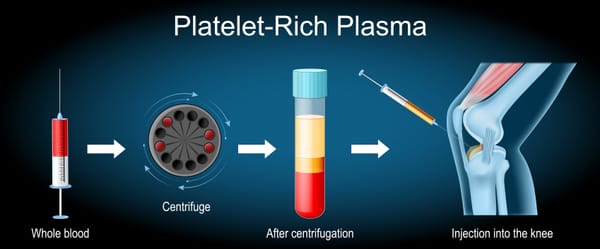Basivertebral Nerve Ablation: A Breakthrough for Vertebrogenic Pain Relief

Chronic low back pain can be a relentless challenge, impacting daily activities like sitting, walking, or even sleeping. While many causes of back pain exist, vertebrogenic pain—pain originating from the vertebral endplates—has emerged as a key culprit for some patients.
For those who find little relief from medications, physical therapy, or other treatments, basivertebral nerve ablation (BVN ablation) offers a promising, minimally invasive solution. In this blog post, we’ll explore what vertebrogenic pain is, how basivertebral nerve ablation works, and what patients can expect, all explained clearly for a general audience.
Understanding Vertebrogenic PainVertebrogenic pain is a type of chronic low back pain caused by damage or degeneration in the vertebral endplates—the thin layers of cartilage and bone connecting the vertebrae to the intervertebral discs. These endplates are rich in nerve endings, including the basivertebral nerve, which can transmit pain signals when irritated or inflamed. Common causes include:
- Degenerative Disc Disease: Wear and tear on discs can stress the endplates, leading to inflammation or microfractures.
- Endplate Damage: Injuries, aging, or repetitive stress can cause endplate lesions or defects.
- Modic Changes: Specific changes in the vertebral bone marrow (seen on MRI) often linked to vertebrogenic pain.
Symptoms typically include deep, aching pain in the lower back, often worse with prolonged sitting, standing, or bending. Unlike nerve root pain (e.g., sciatica), vertebrogenic pain is usually centralized and doesn’t radiate to the legs. It affects 10-15% of chronic low back pain patients, per a 2020 study in The Spine Journal, and is often resistant to conventional treatments.
What is Basivertebral Nerve Ablation?
Basivertebral nerve ablation (BVN ablation), also known as intravertebral disc ablation, is a minimally invasive procedure that uses radiofrequency energy to disable the basivertebral nerve, which carries pain signals from the vertebral endplates. By interrupting these signals, BVN ablation reduces or eliminates vertebrogenic pain without altering the spine’s structure.The procedure, often performed under fluoroscopic guidance, involves:
- Inserting a small probe through the skin into the vertebral body.
- Using radiofrequency energy to heat and ablate (destroy) the basivertebral nerve.
- Completing the outpatient procedure in about 30-60 minutes, typically under local anesthesia or mild sedation.
BVN ablation is often marketed under brand names like the Intracept procedure and is performed by pain specialists, interventional radiologists, or spine surgeons.How BVN Ablation Treats Vertebrogenic PainThe basivertebral nerve, located within the vertebral body, becomes hyperactive in damaged or degenerated endplates, transmitting pain signals to the brain. BVN ablation works by:
- Disrupting Pain Signals: Radiofrequency energy heats the nerve to 70-85°C, damaging its ability to transmit pain.
- Targeting the Source: Specifically addresses endplate-related pain, leaving surrounding tissues intact.
- Preserving Spine Function: Unlike fusion surgery, BVN ablation doesn’t alter spinal mechanics, maintaining mobility.
It’s typically considered for patients with:
- Chronic low back pain (lasting over 6 months) not relieved by conservative treatments like physical therapy, medications, or injections.
- MRI evidence of Modic changes (Type 1 or 2) in the lumbar vertebrae (L3-S1).
- Pain consistent with vertebrogenic origin (central low back pain, worse with activity).
What Does the Evidence Say?
Research supports BVN ablation as an effective treatment for vertebrogenic pain, particularly in patients with specific MRI findings. Key findings include:
- Pain Reduction: A 2020 randomized controlled trial in Spine found that 65-75% of patients with vertebrogenic pain achieved at least 50% pain reduction at 3 months post-BVN ablation, with 60% maintaining relief at 12 months.
- Improved Function: A 2019 study in The Spine Journal reported that 70% of patients had significant improvements in function (measured by the Oswestry Disability Index) at 6 months, enabling better daily activities.
- Long-Term Relief: A 2021 follow-up study in Pain Medicine showed that 60-65% of patients maintained pain relief and functional gains at 5 years post-procedure.
- Reduced Medication Use: A 2020 review in Journal of Pain Research noted that 50-60% of patients reduced reliance on pain medications, including opioids, after BVN ablation.
- Patient Experiences: On platforms like Reddit, patients describe BVN ablation as “a turning point,” with many reporting reduced pain and improved mobility, though some note a gradual return of mild symptoms over time.
BVN ablation is not a cure for all back pain and is most effective for vertebrogenic pain confirmed by MRI. It’s less helpful for other pain sources, like facet joints or nerve root compression.
What to Expect from BVN Ablation
Here’s an overview of the BVN ablation process:
- Pre-Procedure: Your doctor will review your pain history, medical condition, and MRI to confirm vertebrogenic pain (e.g., Modic changes in L3-S1). A diagnostic test, like a discogram or medial branch block, may be used to rule out other pain sources. You may need to stop blood thinners or NSAIDs temporarily.
- Procedure: Under local anesthesia or mild sedation, a small incision is made, and a probe is inserted into the vertebral body using fluoroscopy for guidance. Radiofrequency energy ablates the basivertebral nerve in 10-15 minutes per vertebra. The procedure takes 30-60 minutes total.
- Recovery: Most patients go home the same day. Mild soreness or bruising at the incision site is common for a few days. Strenuous activity is avoided for 2-4 weeks. Pain relief often begins within 1-2 weeks but may take up to 6 weeks to peak.
- Follow-Up: Regular check-ups assess pain relief and function. Unlike implanted devices, BVN ablation requires no ongoing maintenance, though repeat procedures may be considered if pain recurs.
- Side Effects: Common side effects include temporary soreness or discomfort at the site. Rare risks (1-2%) include infection, bleeding, or nerve injury, minimized by imaging guidance and experienced providers.
Benefits and Considerations
Benefits:
- Significant pain relief, often 50-75% reduction, lasting 12 months or longer.
- Improved function, enabling better daily activities and mobility.
- Minimally invasive with quick recovery compared to spinal fusion.
- Reduces reliance on pain medications, including opioids.
- Preserves spinal structure, avoiding the risks of more invasive surgeries.
Considerations:
- Temporary side effects like soreness or bruising at the incision site.
- Rare risks include infection, nerve damage, or vertebral fracture (less than 1% with skilled providers).
- Costs range from $5,000-$15,000, with insurance coverage varying (often approved with MRI evidence of Modic changes).
- Not suitable for all back pain (e.g., facet joint pain, disc herniation, or non-vertebrogenic causes).
Is BVN Ablation Right for You?
BVN ablation is typically considered for patients with:
- Chronic low back pain (over 6 months) not relieved by conservative treatments like physical therapy, medications, or epidural injections.
- MRI-confirmed Modic changes (Type 1 or 2) in the lumbar spine (L3-S1).
- Centralized low back pain consistent with vertebrogenic origin, without significant leg pain or neurological deficits.
Your specialist, will assess:
- The source of your pain, using MRI, clinical exams, or diagnostic tests.
- Your overall health, including any contraindications like active infections or bleeding disorders.
- Your goals, such as pain reduction, improved function, or avoiding surgery.
Discuss the procedure’s risks, benefits, and expected outcomes with your provider. Choosing a center experienced in BVN ablation is crucial for safety and success.
Complementary Treatments
BVN ablation is often part of a broader pain management plan, including:
- Physical Therapy: Core strengthening and posture exercises to support spinal health.
- Medications: Low-dose NSAIDs, muscle relaxants, or neuropathic drugs (e.g., gabapentin) for residual pain.
- Interventional Procedures: Facet joint injections or spinal cord stimulation for non-vertebrogenic pain sources.
- Lifestyle Changes: Weight management, ergonomic adjustments, or gentle exercise to reduce spinal stress.
- Psychological Support: Counseling or mindfulness to address chronic pain’s emotional toll.
A 2021 study in Neuromodulation found that combining BVN ablation with physical therapy improved outcomes by 30-40% in vertebrogenic pain patients, emphasizing a multidisciplinary approach.
Living with Vertebrogenic Pain
Chronic low back pain can feel isolating, limiting work, hobbies, or sleep. BVN ablation offers hope for significant relief, but it’s not a one-size-fits-all solution. Keep a pain diary to track symptoms and triggers, and communicate openly with your healthcare team. Support groups, through organizations like Spine-Health (spine-health.com) or online platforms like Reddit, provide a space to share experiences and coping strategies.
Emotional support is vital, as chronic pain can amplify stress or frustration. Lean on counselors, family, or friends for encouragement. Practical steps, like using heat therapy, pacing activities, or maintaining a healthy weight, can also help.
Why Awareness Matters
Chronic low back pain affects 20-30% of adults, but vertebrogenic pain is often underdiagnosed due to its specific MRI findings, per a 2020 review in Global Spine Journal. BVN ablation is a relatively new treatment, and awareness is key to ensuring patients with vertebrogenic pain access this option. Early diagnosis and intervention can prevent pain from becoming intractable.
If you’re struggling with chronic low back pain, especially with MRI evidence of Modic changes, talk to a pain specialist, spine surgeon, or interventional radiologist about whether BVN ablation could help. Resources like the North American Spine Society (spine.org) or Spine-Health offer valuable information and support.
By spotlighting treatments like basivertebral nerve ablation, we can bring hope and relief to those facing vertebrogenic pain. Let’s keep the conversation going—no one should endure this pain alone.
Disclaimer: This blog post is for informational purposes only and not a substitute for professional medical advice. Consult a healthcare provider before considering basivertebral nerve ablation or any new treatment for vertebrogenic pain.



